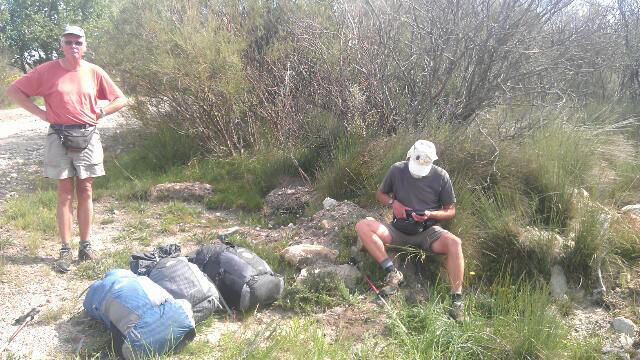by betsy
29. May 2012 08:09
May 28, 41st day walking and until now I have stubbornly refused any help with carrying my few simple needs (!). Today however I finally and very gratefuly handed over most of my possessions to my 2 gallant fellow peregrinos when I was already slowing down after only 12 gentle kilometers. It had been a pleasant early morning stroll partly beside a stream, with a delightful moment when I startled a deer, but even that and a coffee and an extra Magdalena weren't going to be enough to get me up the next hill to the highest point on our journey so my pack was unpacked after coffee and shared out before we carried on, me a little more sprightly than before. Note the middle rucksack in the photo, now significantly smaller (and lighter) than the other two. Thank you T and T. The ascent was relatively gently upwards but relentless through oak and birch woodland with many flowers including bluebells, primroses, forget-me-nots. The track we followed both up and down again was often shared by a stream and well shaded and pretty. Altogether a delightful walk if hard work, and included fine views and a beautiful swallowtail butterfly at our highest point.
For me though the day also had a strong undercurrent of sadness, having heard the bad news yesterday evening that an ex colleague and friend had lost her battle with cancer. There was plenty of quiet time whilst walking to remember the many long years working together, sharing problems and celebrating successes; and also to be reminded again of how lucky I am to be alive and healthy to enjoy all a camino brings.
 |